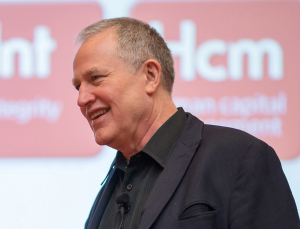-
Hem
-
Om Underhåll
-
Konferens
- Utställare
-
Händer på mässan
-
Planera ditt besök
-
För utställare
-
 Terrence O´Hanlon is the Chief Executive Officer of reliabilityweb.com and an asset management leader specializing in reliability and operational excellence. He believes that being a reliability leader is realizing a future that wasn’t going to happen anyway.
Terrence O´Hanlon is the Chief Executive Officer of reliabilityweb.com and an asset management leader specializing in reliability and operational excellence. He believes that being a reliability leader is realizing a future that wasn’t going to happen anyway.
What is reliability leadership?
– World-class organizations recognize that success is achieved through leadership. However, they also realize that results are only delivered through the engagement and empowerment of everyone in the workforce. Leadership does not come from one person; it comes from everyone. This is especially true for reliability. Being a reliability leader is defined as realizing a future that wasn’t going to happen anyway. Reliability leadership is defined as actions that result in a created future that wasn’t going to happen anyway. To be a reliability leader, you must be able to lead and exercise reliability leadership effectively with no title, no position, and no authority.
How do you to create a reliability culture and why is this important?
– Culture is what you believe and is created by what you repeatedly do, what you recognize and what you reward. It does not take long for a workforce to figure out what makes the boss and the managers happy. In the Uptime Elements Reliability Framework, we know that reliability leadership creates the reliability culture. We also know that the reliability culture delivers the reliability performance. If you would like to advance reliability performance, you will need to focus on reliability leadership.
In what way is good leadership related to smart maintenance?
– Leadership is empowerment, engagement, cross-functional collaboration and line of sight to organizational objectives and company aim. In many ways it is about ensuring people have what they need to do a better job. If they need clarity, you provide that. If they need work instruction, you provide that. If they need technology, you provide that. Maintenance is often a collection of tasks from unknown origins that are not technically valid and often not economically feasible. It requires strong leadership to take a stand for performing only the maintenance tasks that are technically validated to:
- Realize the inherent safety and reliability levels of the asset.
- Restore safety and reliability to their inherent levels when deterioration has occurred.
- Obtain the information necessary for design improvement of those items whose inherent reliability proves inadequate.
- Accomplish these goals at a minimum total cost, including maintenance cost and the costs of failures or other optimum factor basis for your context.
Why do companies often fail when it comes to reliability leadership, digitalization and smart maintenance?
– There are many reasons, however the most common two are: one, they fail to work cross-functionally. Reliability is everyone’s responsibility just like safety and quality. Two, they fail to realize the people part of the journey is as significant as the technical part of journey.
Requirements to succeed in the transformation to reliability leadership:
- A clearly articulated vision and declaration.
- The will to make the journey.
- Create a written policy.
- Create a written strategic plan.
- Create a rolling 5-year detailed technical plan.
- Create a rolling 5-year detailed cultural change plan.
- Create a rolling 5-year detailed competency-based learning development plan.
- The Executive Sponsor must remain active the entire time.
“Productivity and profitability” will be one of the focus areas at Underhållsmässan 2020, which is being held 10-13 March at the Swedish Exhibition & Congress Centre in Gothenburg.
Terrence O´Hanlon is the main speaker at several of the talks during the event. You can find the programme and more information on Underhållsmässan 2020 at www.underhall.se.